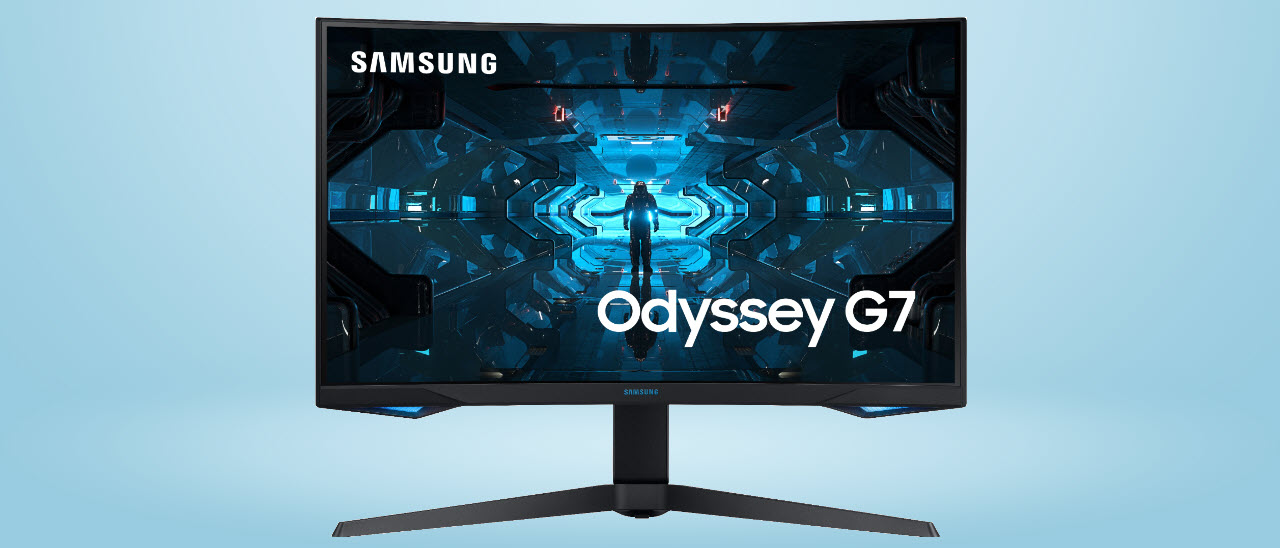Why you can trust Tom's Hardware
The Odyssey G7 defaults to its Custom picture mode, and that’s where it should stay for best results. Though all calibration controls are available, there is no need or benefit to adjustment. It has one of the most accurate default images we’ve come across.
Grayscale and Gamma Tracking
We describe our grayscale and gamma tests in detail here.
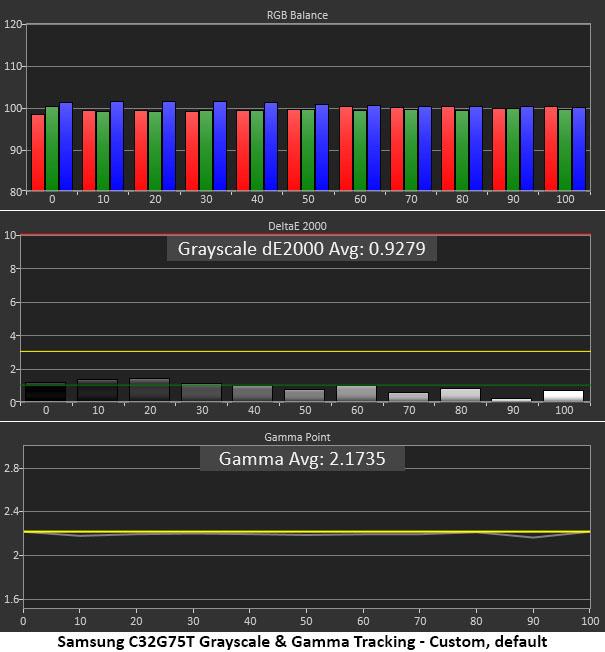
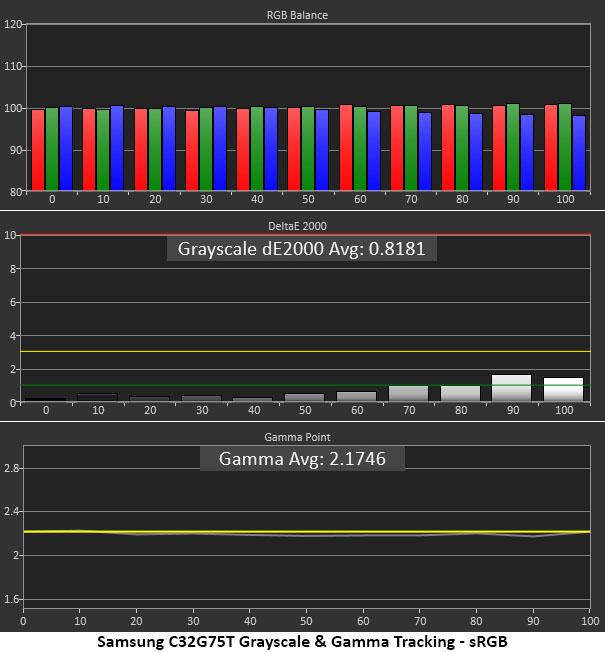
Only a few professional monitors can match the accuracy of our review focus. It’s one of the best we’ve measured. Grayscale errors are completely invisible with only 10 and 20% reading higher than 1 Delta E (dE). Gamma is also visually perfect. The tiny aberration at 90% represents only 2 nits, which is almost nothing.
If you prefer the smaller sRGB color gamut for SDR gaming and video, Samsung provides a usable mode that includes near-perfect grayscale and gamma tracking. Its red is a little over-saturated, as you’ll see in the next section, but it is still very functional.
Comparisons
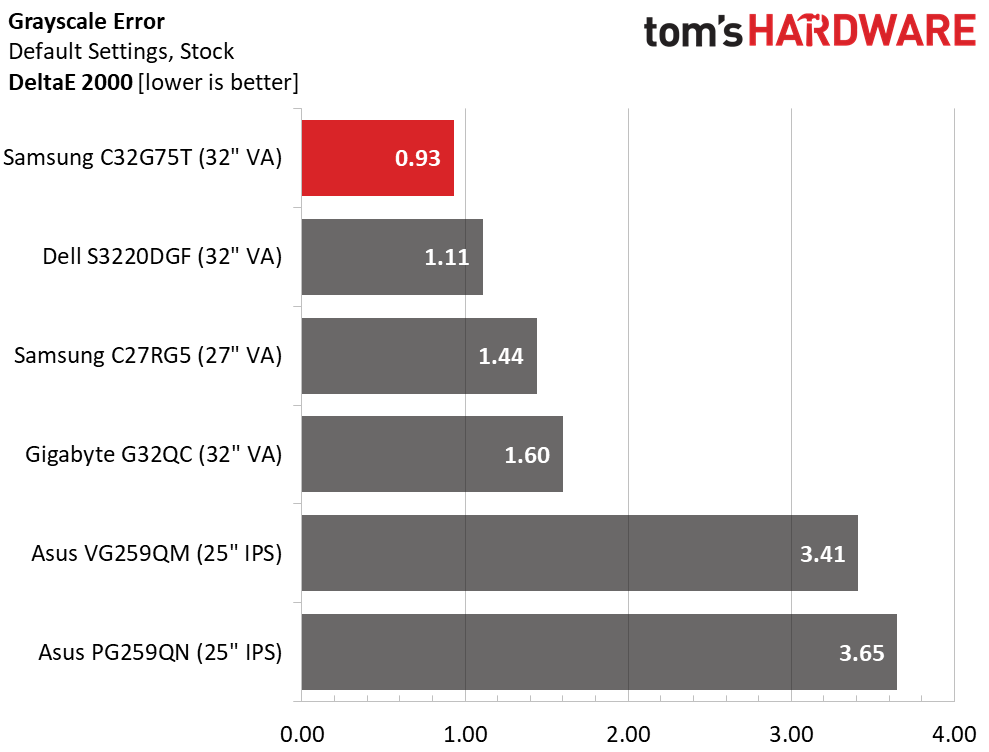
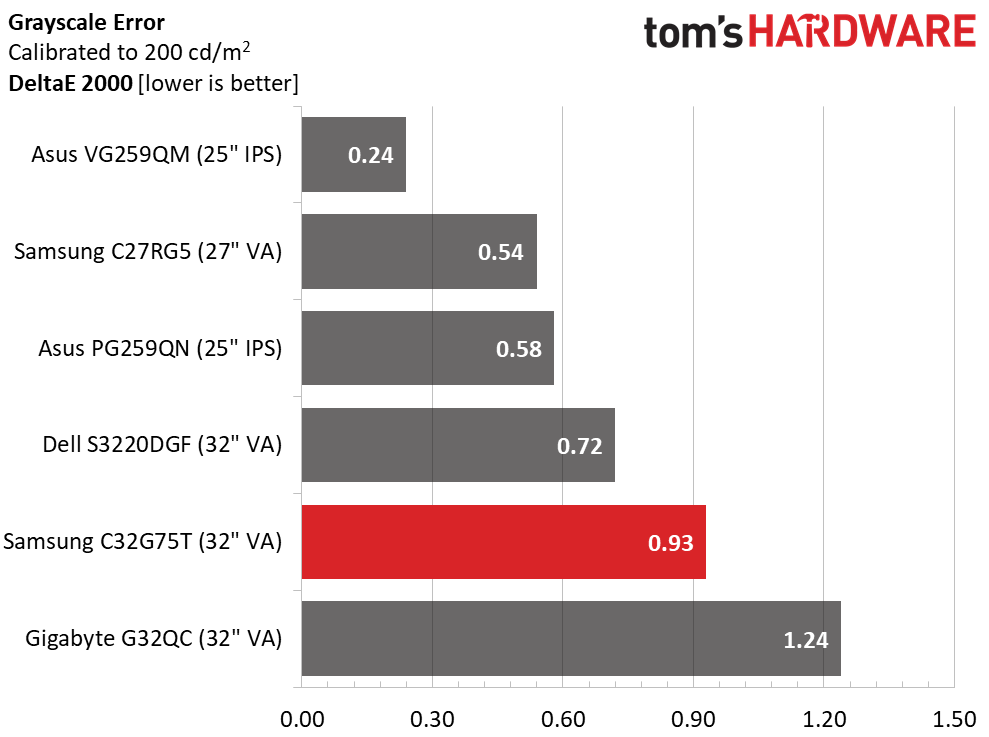
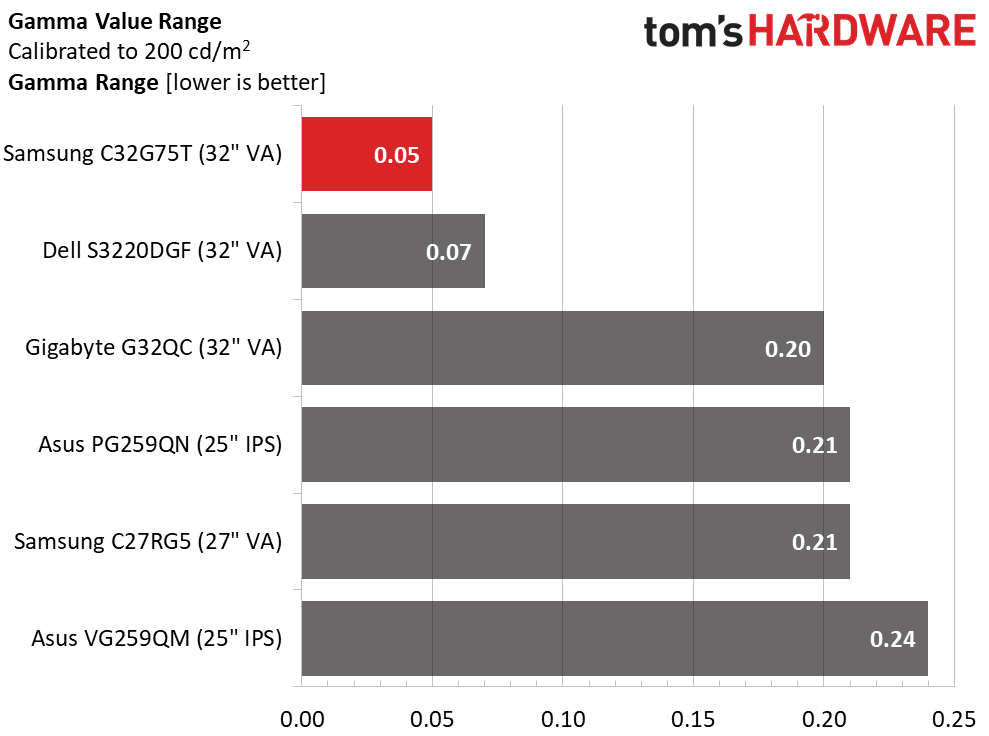
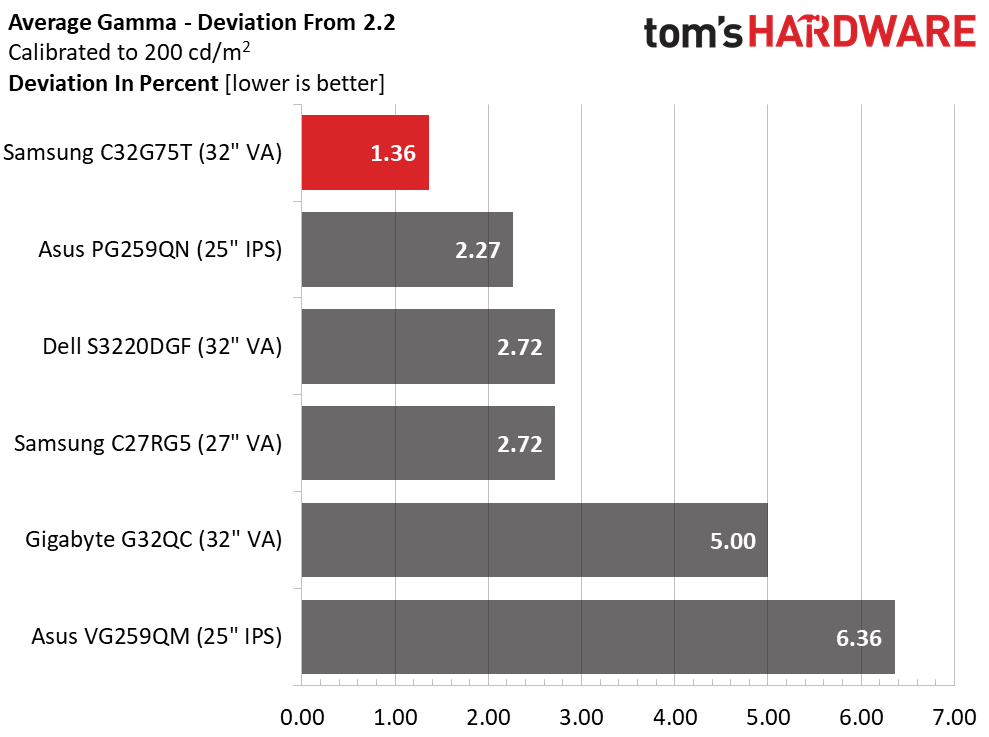
Though we were able to adjust the C32G75T’s Custom picture mode, we could not make the grayscale tracking any better. By default, it’s as close to perfect as we’ve seen. The sRGB mode’s 0.82dE value is also impressive. Gamma deviates from 2.2 by only 1.36% with a tight 0.05 range of values. It doesn’t get much better than this.
Color Gamut Accuracy
For details on our color gamut testing and volume calculations, click here.
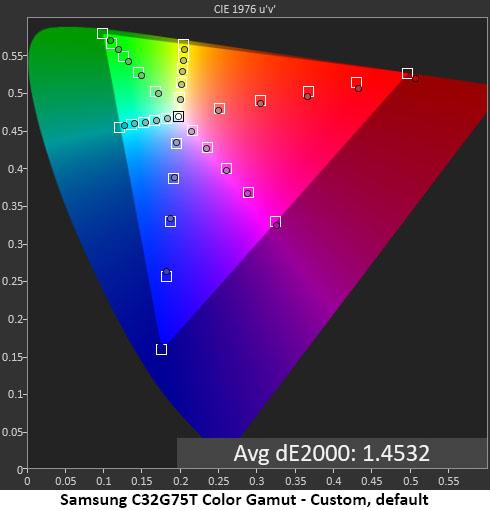
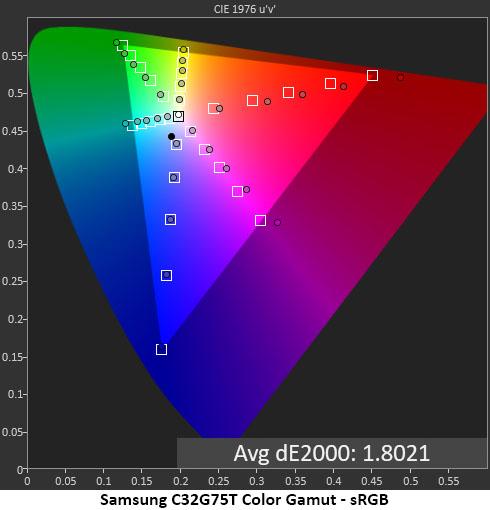
Measuring the Odyssey G7 against the P3 spec shows a little under-saturation of the green primary, but all other targets are spot-on. The average error of 1.45dE is extremely low for any monitor and especially impressive for a gaming display.
Get Tom's Hardware's best news and in-depth reviews, straight to your inbox.
The sRGB mode is also nearly error-free, but the red primary is visibly over-saturated. You’ll notice slightly ruddier flesh tones and more brilliant sun and fire textures. There is a slight magenta hue error as well.
Comparisons
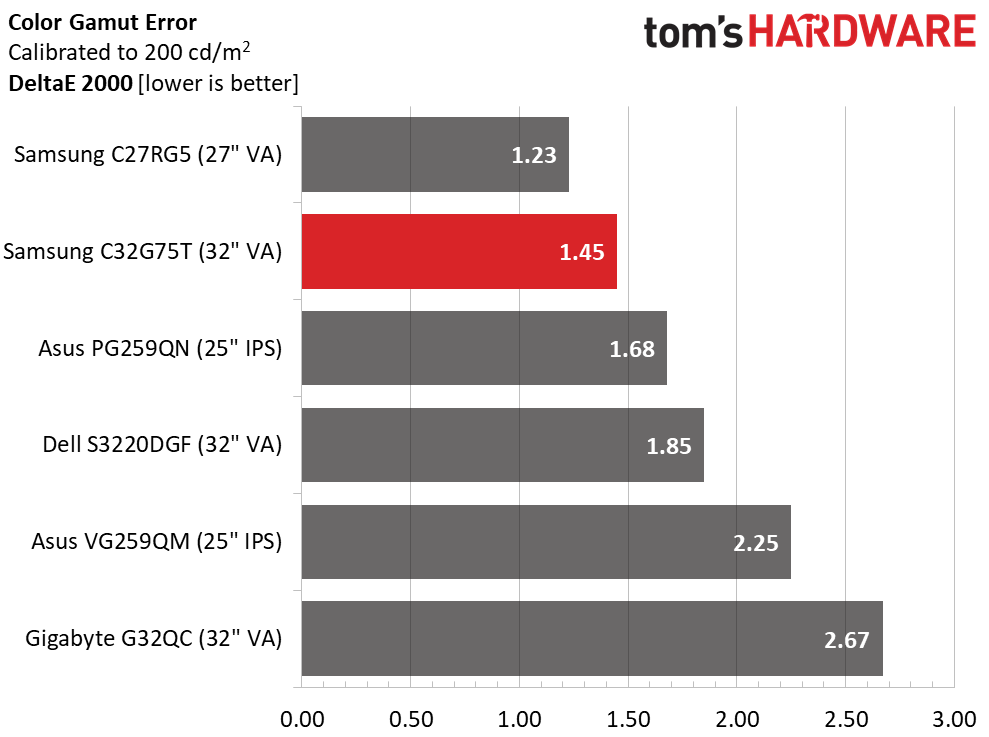
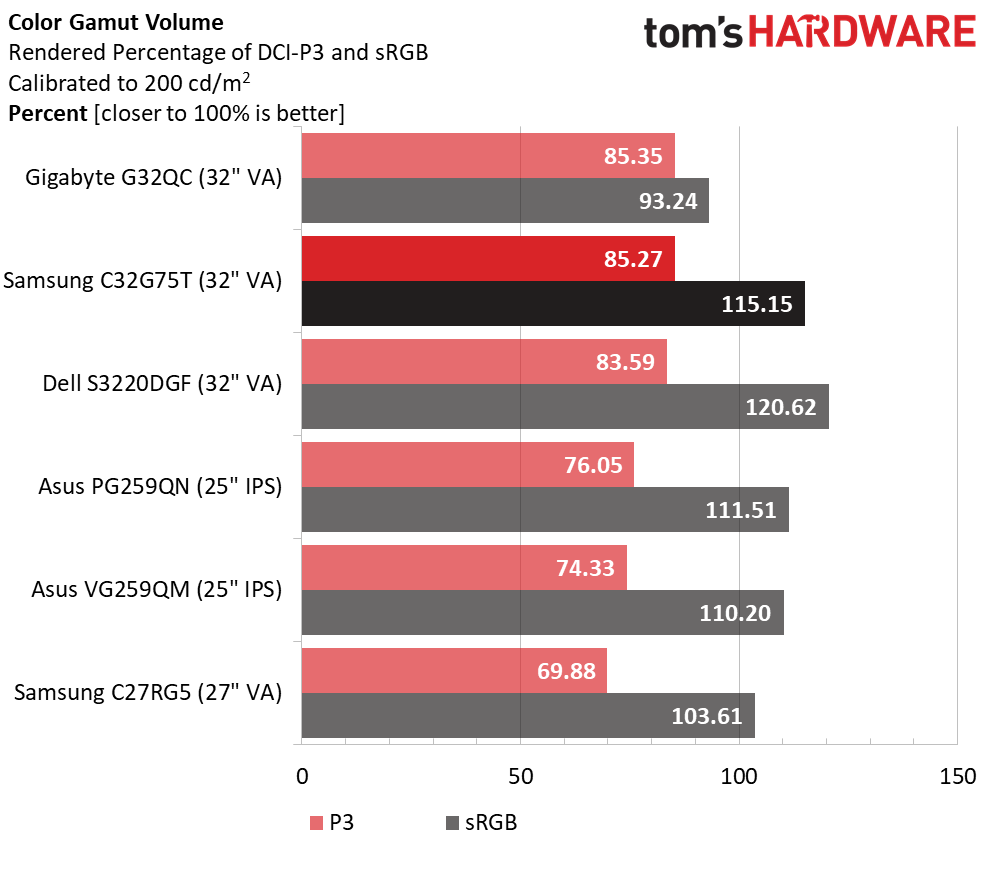
0.93dE represents the C32G75T’s native P3 color gamut. Our sRGB average error was just 1.80dE. You can see that Samsung takes accuracy seriously because our review subject was bested only by the Samsung 27” CRG5. Of course, all the monitors here put up impressive color numbers with accurate and vivid saturation of all hues.
We’ve tested a few monitors that surpass 90% coverage of P3, but our review focus covered a little more than the competition. The bottom three screens in our Color Gamut Volume chart above are sRGB-native screens, so their results are appropriate. In the Odyssey G7’s case, you’ll want to use a software profile when working with color-critical apps in the sRGB or P3 gamuts.
Current page: Grayscale, Gamma and Color
Prev Page Brightness and Contrast Next Page HDR Performance
Christian Eberle is a Contributing Editor for Tom's Hardware US. He's a veteran reviewer of A/V equipment, specializing in monitors. Christian began his obsession with tech when he built his first PC in 1991, a 286 running DOS 3.0 at a blazing 12MHz. In 2006, he undertook training from the Imaging Science Foundation in video calibration and testing and thus started a passion for precise imaging that persists to this day. He is also a professional musician with a degree from the New England Conservatory as a classical bassoonist which he used to good effect as a performer with the West Point Army Band from 1987 to 2013. He enjoys watching movies and listening to high-end audio in his custom-built home theater and can be seen riding trails near his home on a race-ready ICE VTX recumbent trike. Christian enjoys the endless summer in Florida where he lives with his wife and Chihuahua and plays with orchestras around the state.
